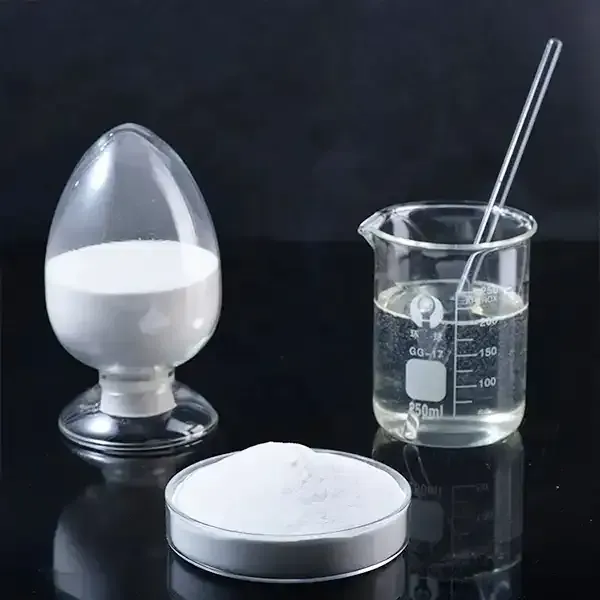A Comprehensive Overview of Cellulose Ethers
Cellulose ethers are a significant class of compounds derived from cellulose, a natural polymer found abundantly in the cell walls of plants. These ethers are widely employed in various industrial applications due to their unique properties such as water solubility, thickening ability, and film-forming characteristics. This article explores the structure, production, properties, and applications of cellulose ethers while highlighting their importance in modern technology and industry.
Structure and Production
Cellulose ethers are produced by the chemical modification of cellulose, which involves the substitution of hydroxyl groups (-OH) on the glucose units of the cellulose chain with ether groups (-O-R). The most common cellulose ethers are methyl cellulose (MC), ethyl cellulose (EC), hydroxypropyl methyl cellulose (HPMC), and carboxymethyl cellulose (CMC). The degree of substitution, which measures how many of the hydroxyl groups have been replaced, significantly influences the solubility and rheological properties of the resulting cellulose ether.
The production process typically involves treating cellulose with alkali solutions to activate the hydroxyl groups, followed by the addition of etherifying agents such as chloromethyl ether or propylene oxide. This reaction transforms the cellulose into its ether form, allowing for a range of solubilities in water, depending on the specific ether and its degree of substitution.
Properties of Cellulose Ethers
One of the most notable properties of cellulose ethers is their ability to dissolve in water. This solubility makes them valuable as thickening agents and emulsifiers in various formulations. The unique structures of these compounds enable them to interact with water molecules, resulting in the formation of viscous solutions. Additionally, cellulose ethers exhibit excellent film-forming properties, making them suitable for applications where coatings and barriers are required.
Another essential characteristic of cellulose ethers is their biocompatibility, which is crucial in pharmaceutical applications
. They can be used in drug delivery systems, acting as controlled-release agents that modify the release rate of active pharmaceutical ingredients. This property also extends to their usage in food products, where they can serve as texture enhancers and stabilizers.Applications of Cellulose Ethers
cellulose ethers

The versatility of cellulose ethers leads to their widespread use across various industries
1. Food Industry Cellulose ethers like CMC are extensively used in food products as thickening and stabilizing agents. They help improve the texture and consistency of sauces, dressings, and dairy products while also preventing the separation of ingredients.
2. Pharmaceuticals In the pharmaceutical sector, cellulose ethers are used in drug formulations, including tablets, capsules, and suspensions. Their ability to control the release of drugs makes them ideal for developing extended-release medications.
3. Cosmetics and Personal Care Cellulose ethers are popular in cosmetic formulations for their thickening and emulsifying properties. They are used in lotions, creams, and gels, contributing to the consistency and application ease of these products.
4. Construction Industry In construction, cellulose ethers such as HPMC are added to cement-based products like tile adhesives and plasters. They improve workability, water retention, and adhesion, ensuring better application and performance of construction materials.
5. Textile Industry Cellulose ethers are utilized in textiles for various processes, including the dyeing and finishing of fabrics. Their capacity to improve the application of dyes and to modify the feel and appearance of fabrics adds significant value.
Conclusion
Cellulose ethers represent a remarkable convergence of natural polymer chemistry and industrial application. Their unique properties, combined with their compatibility with a wide range of formulations, have cemented their role in diverse sectors, from food and pharmaceuticals to cosmetics and construction. As research and technology continue to advance, the potential for new applications of cellulose ethers remains vast, promising innovations that will further enhance their utility in everyday products and industrial processes. Designing cellulose ethers with tailored properties can address specific needs, making them essential materials for the future.
-
Rdp that The Revolutionary Polymer Powder Transforming Modern Construction MaterialsNewsAug.11,2025
-
Hpmc Powder that Versatile Additive for Detergents and Personal CareNewsAug.11,2025
-
Hpmc Hydroxypropyl Methylcellulose that Essential Building Material Additive from Shijiazhuang Gaocheng YongfengNewsAug.11,2025
-
Hydroxypropyl Methyl Cellulos Hpmc that Essential for Construction ApplicationsNewsAug.11,2025
-
Mhec Powder that Revolutionizing Construction Chemistry with Cellulose Ether SolutionsNewsAug.11,2025
-
Industri Hpmc that The Global Backbone of Advanced ConstructionNewsAug.11,2025




